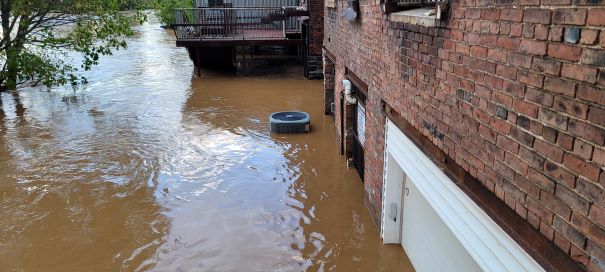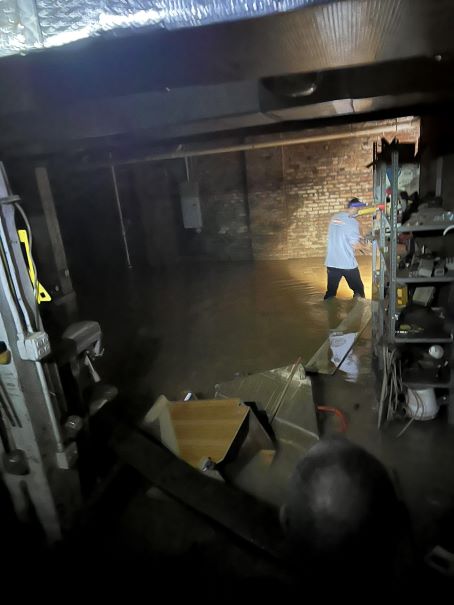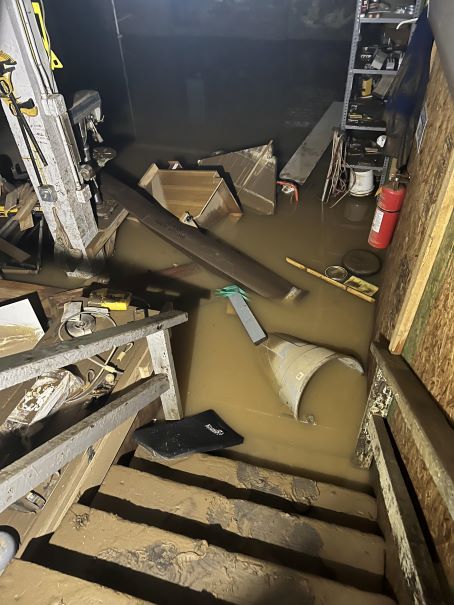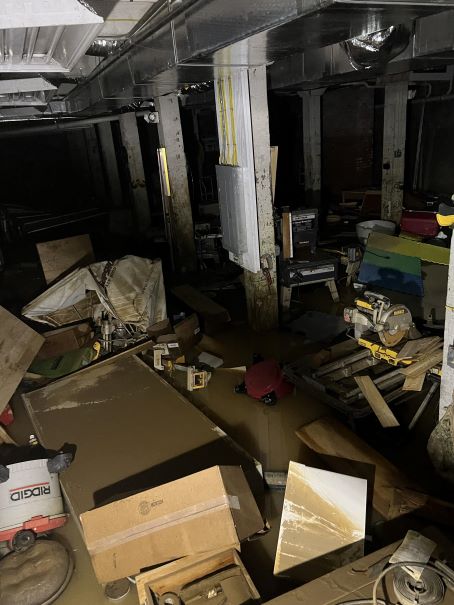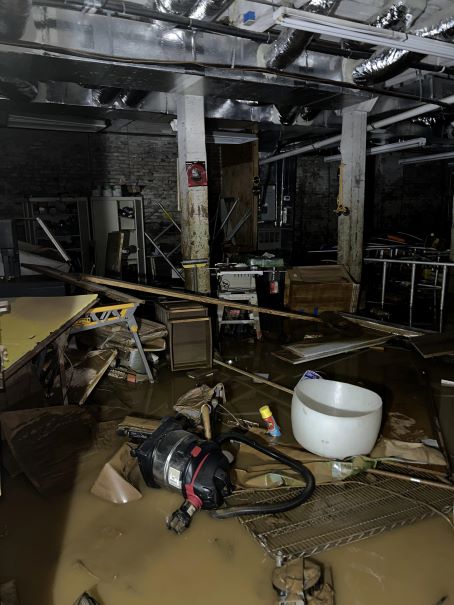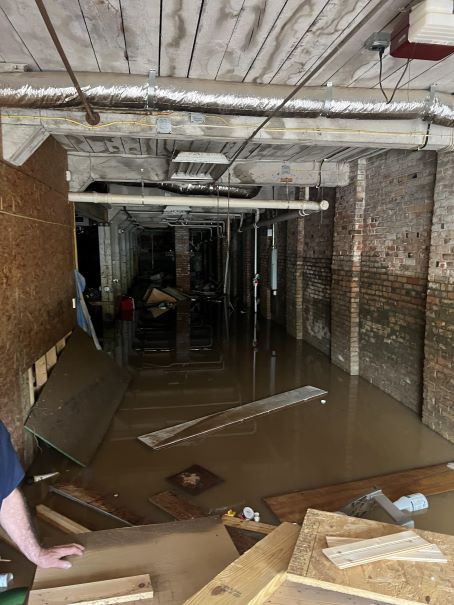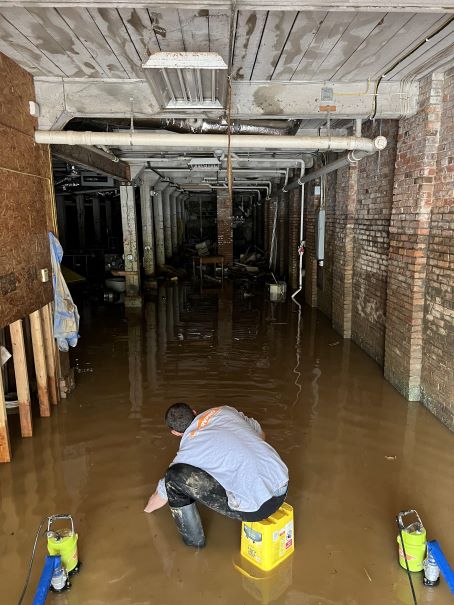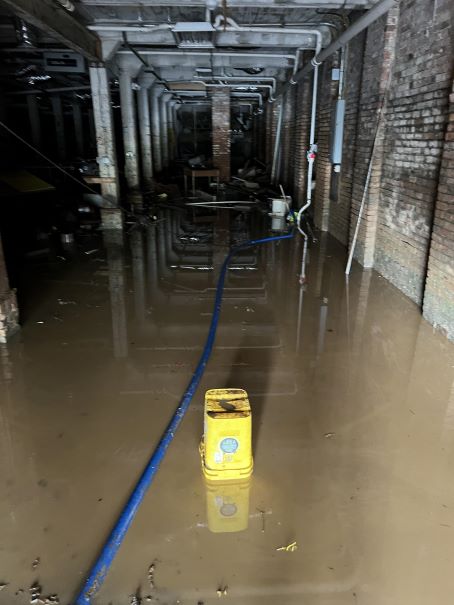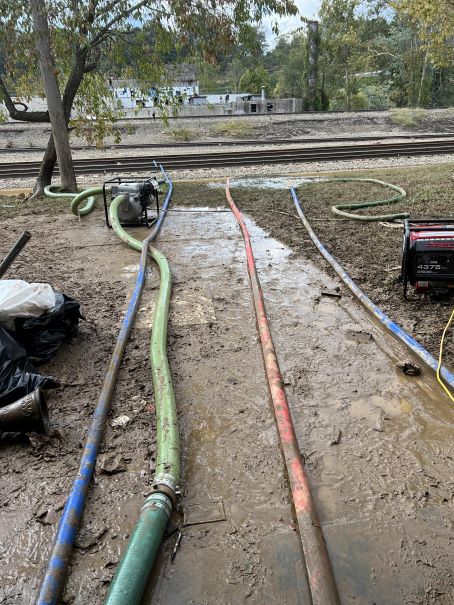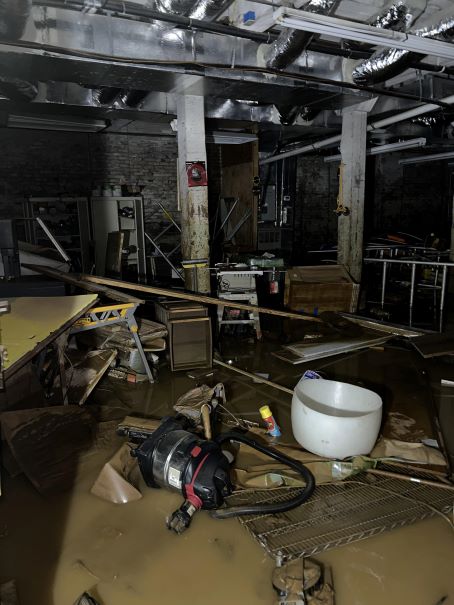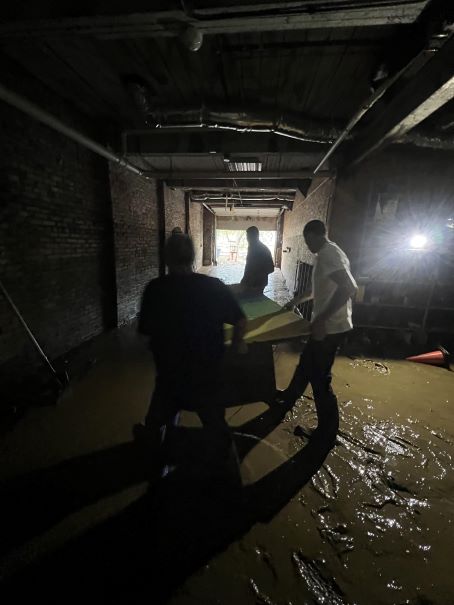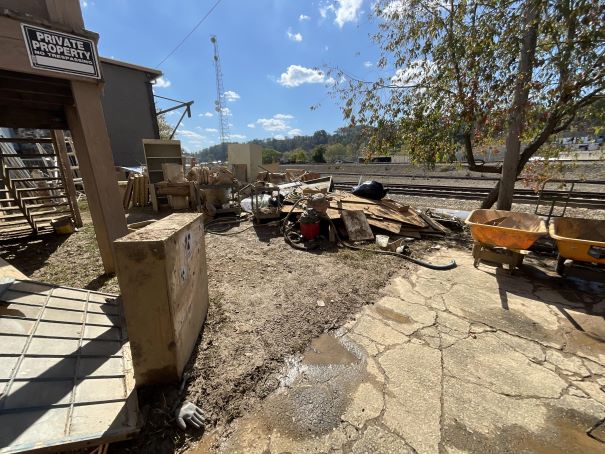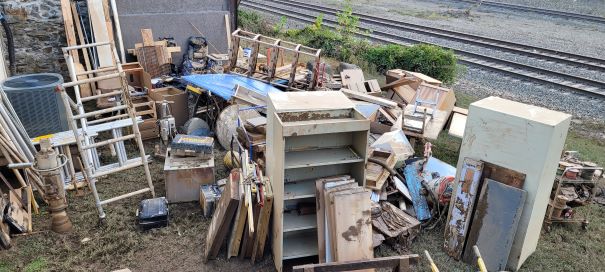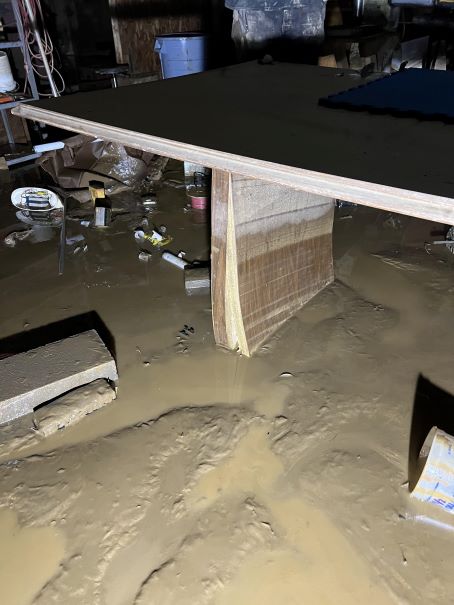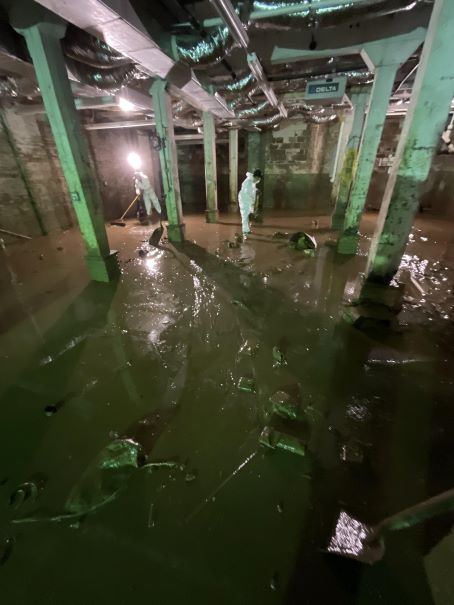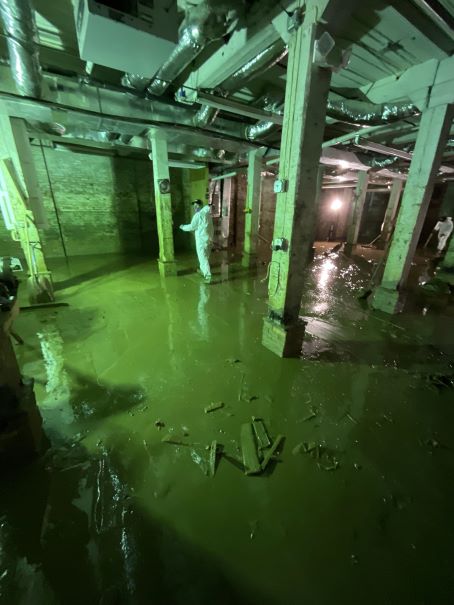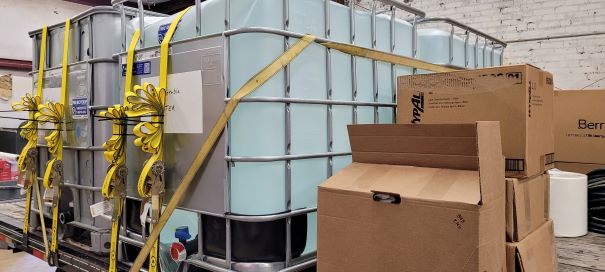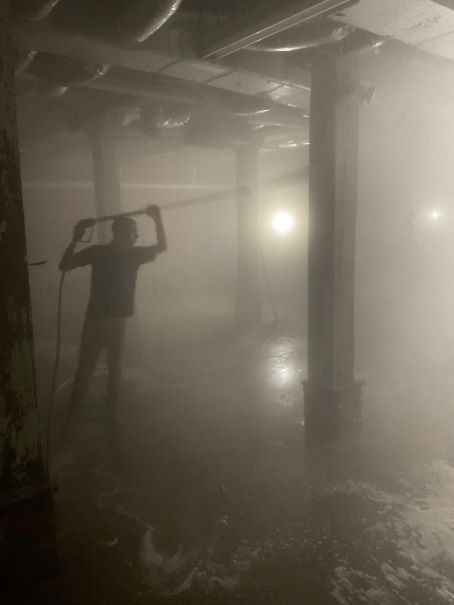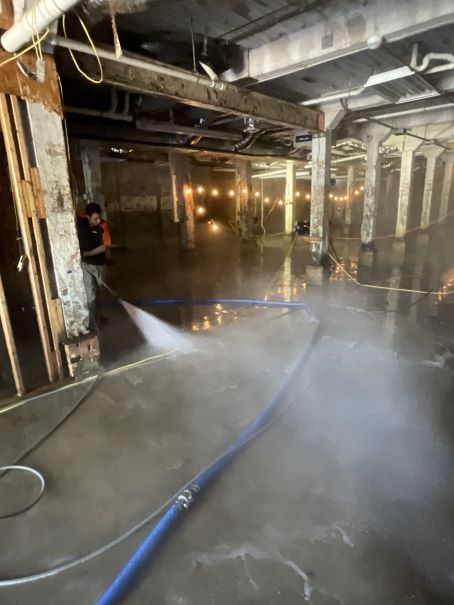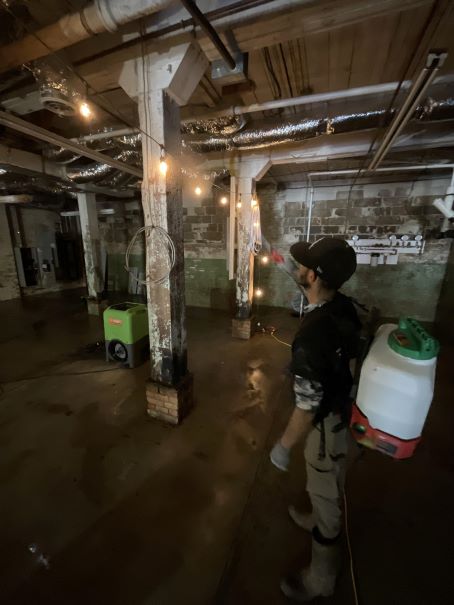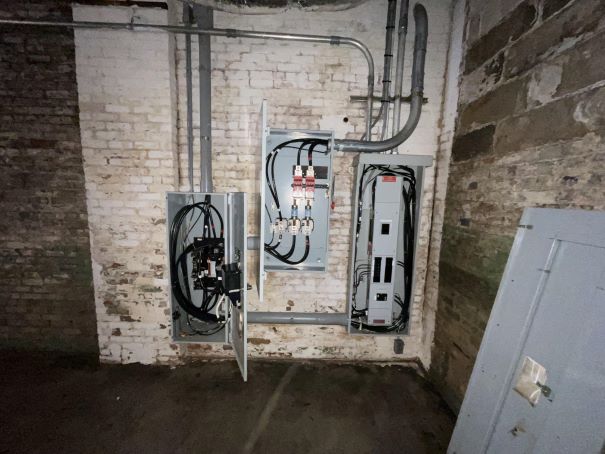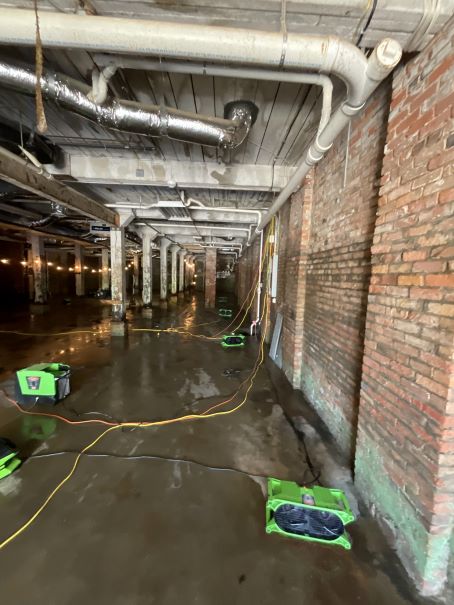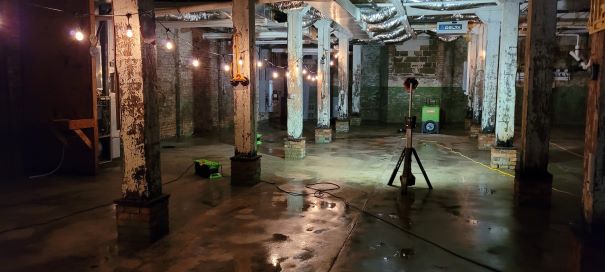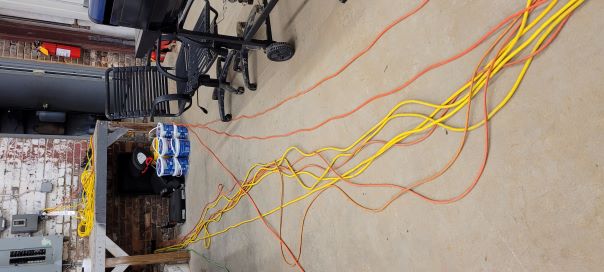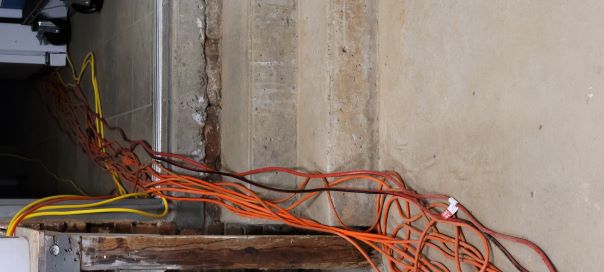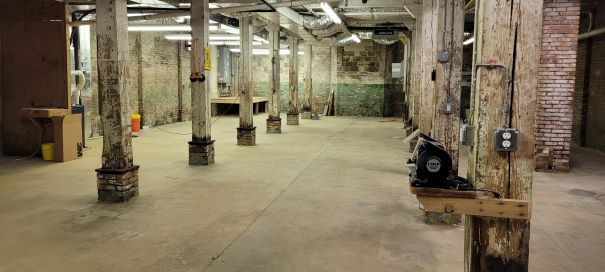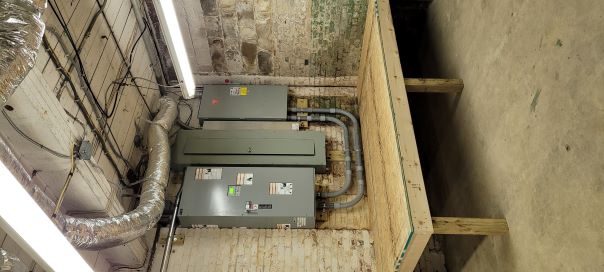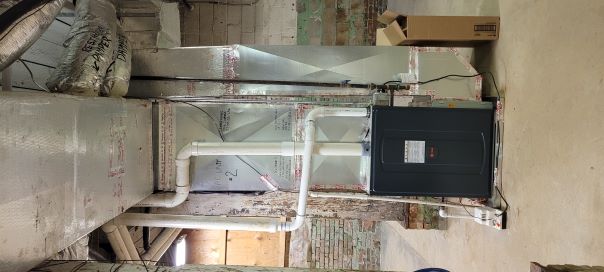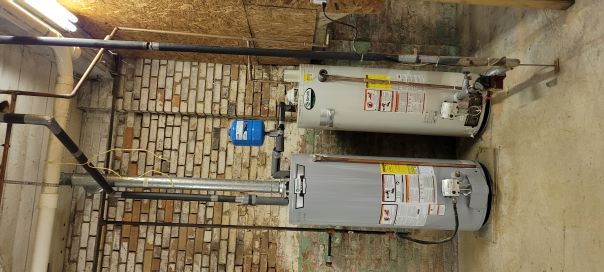Hurricane Helene Flooding
Jim and Kelley appreciate the outpouring of generosity, well wishes, and support from family, friends, and clients during this challenging time.
We are especially grateful to:
- Dogwood Health Trust for awarding our laboratory a grant through the Western North Carolina Small Business Initiative, which was instrumental in funding our recovery efforts.
- Eastman Chemical, who generously supplied everything from cleaners and rags to cat food, as well as over 1,500 gallons of deionized water.
- Environmental Chemists, Inc., who provided generators, gas, food, water, and other supplies—and even washed our clothes!
- Melissa and Anthony Keesecker, who supplied a generator, gas, supplies, food, water, and invaluable assistance with work crews.
Without their incredible support, our laboratory's recovery and reopening would not have been possible. We are truly grateful for their help and kindness.
Video Links:
Prior to French Broad River cresting
Prior to French Broad River cresting
Behind laboratory, prior to French Broad River cresting
Behind laboratory, morning after flooding
Minnow culture during the flooding
Laboratory cultures: Minnows and Ceriodaphnia were actively maintained throughout the restoration process. On the night of the flood, minnows were separated into trays and smaller tanks to provide greater surface area for oxygen exchange. Once we obtained generators, power was rotated at 2-hour intervals between aerators, pumps, and filters to maintain our minnow cultures. Ceriodaphnia cultures were fed daily and individual cultures continued to be renewed 3 times a week. In addition, numerous backup Ceriodaphnia were cultured in jars and maintained in both buildings.
Flood damage and recovery:
|
Flooding behind the laboratory
As floodwaters rapidly rose, we worked tirelessly in the basement, sweeping water into sumps to protect the electrical and generator panels that kept the laboratory running. After two exhausting hours, the five sumps were overwhelmed and unable to keep up with the rising water. At that point, we shifted our focus to moving items to higher shelves as water began forcing its way through the garage door panels, causing them to buckle under the immense pressure. Recognizing the danger, we made the decision to cut power to the building and rushed upstairs to the deck overlooking the back. Just 15 minutes later, the water breached the garage door, and we could hear the contents of the basement being swept to the front of the building in a powerful surge.
|
|
The flood caused extensive damage throughout the area, leaving us without all utilities, including water, power, internet, and phone service. In our laboratory, water levels reached 10 feet in the basement, submerging four small electrical panels, three main electrical/generator panels, two water heaters, and two furnaces. Thanks to the support of family and Environmental Chemists, Inc., contractors were on-site just two days after the flood. They worked to pump out the remaining water, clear debris and mud, pressure wash, and disinfect the basement. These critical steps were necessary to prepare the space for replacing the electrical panels and allowing us to resume operations.
Work crews had to wade through the water and debris to open the damaged
Initial views of damage.
With the garage door now open, water removal could begin.
Once water was removed, crews could begin working on removing debris. Looters began stealing items during the day and night before we had a chance to recover items that could be salvaged. A thick layer of mud covered everything, that also had to be removed.
After a week of hard work, all the water, mud, and debris were cleared from the basement. However, the next stage of recovery was at a standstill without a water source, as Asheville's water service had yet to be restored. Pressure washing the basement was essential before we could replace the electrical panels and restart laboratory operations. Thankfully, Eastman Chemical stepped in with an incredible donation of over 1,500 gallons of deionized water. This invaluable resource not only enabled us to clean and prepare the basement but also provided the necessary water for laboratory cultures and to resume testing. Their support was instrumental in getting us back on track! Pressure washing began the day after Eastman Chemical provided water. Non-hazardous cleaners and disinfectants were used to prevent mold growth.
Dehumidifiers and fans were used to dry the basement.
By the second week, power was restored to our minnow culture system, and drop cords were used to supply power to incubators and critical equipment in the main laboratory. Our top priority was ensuring safe drinking water for affected communities by providing testing services to help lift boil water notices. During this time, contractors were on-site, working to replace all electrical panels, furnaces, and water heaters, as well as cleaning the heating and air ducts. These efforts were vital in restoring full functionality to the laboratory. By the third week, our laboratory was able to resume wastewater testing and toxicity testing using Ceriodaphnia. After one month, we were back to conducting all laboratory tests, despite operating with only minimal power. Given the extent of the damage, it took five weeks for full power to be restored to the laboratory. This milestone marked a significant step in our recovery and our ability to fully serve the needs of our clients. After views: Two furnaces, water heater, four small electrical panels, three main building/generator panels replaced. All electrical boxes/outlets that were under water were replaced.
The total cost of restoration exceeded $140,000, not including the significant revenue lost during the laboratory's closure. Throughout the month-long recovery process, while crews worked on-site, Jim and Kelley lived at the laboratory to oversee and support the restoration efforts.
|

